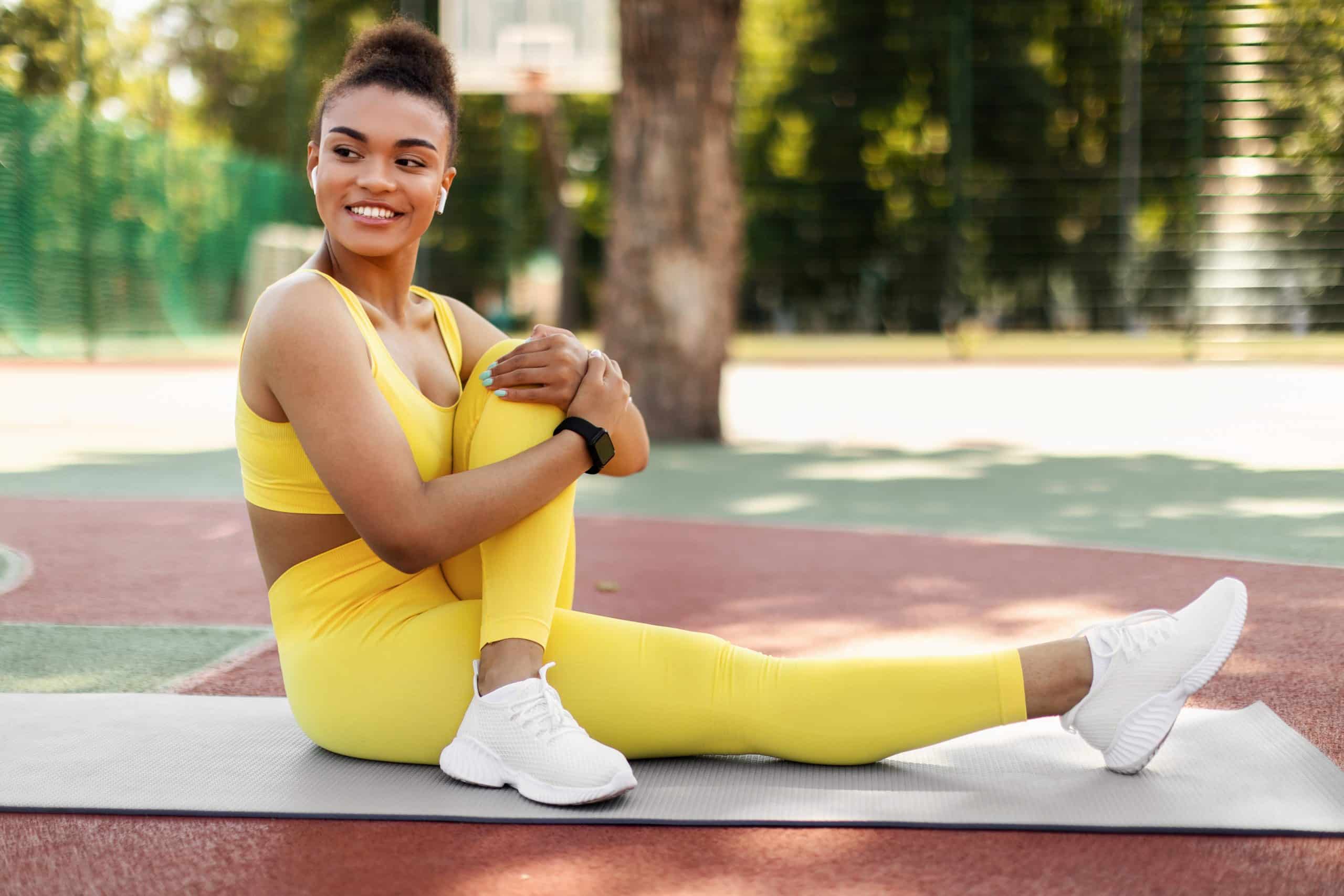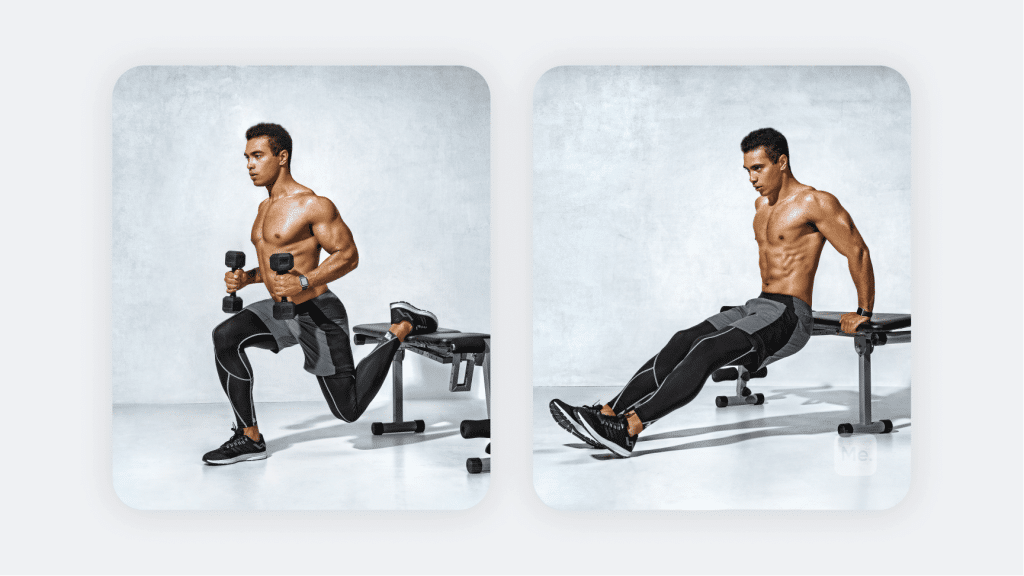Did you know that 60-85% of people worldwide lead sedentary lifestyles, according to the World Health Organization? Prolonged sitting can cause our hip flexors to shorten and weaken, leading to discomfort and reduced mobility. Fortunately, incorporating a targeted fitness routine can help alleviate these issues and promote overall well-being. In this blog post, we’ll explore six exceptional strengthening exercises which are designed to enhance your hip flexor flexibility, improve posture, and leave you feeling revitalized. We’ll also provide tips on proper form and technique to ensure you get the most out of your workouts.
What Are Hip Flexors?
Hip flexors are a group of muscles located at the front of your hips and upper thighs that play a crucial role in various movements and functions (1). They primarily act to flex the hip joint, which involves bringing your thigh towards your chest or bending at the waist.
This group of muscles consists of several key components, including:
- Iliopsoas (comprised of the psoas major and iliacus muscles)
- Rectus femoris (part of the quadriceps muscle group)
- Sartorius
- Tensor fasciae latae
These muscles work together to perform essential functions such as:
1. Hip Flexion
As the primary movers, hip flexors enable you to lift your knees towards your chest, climb stairs, or bend forward at the waist. They play a vital role in walking, running, and jumping by allowing you to swing your legs forward.
2. Posture Maintenance
Hip flexors contribute to maintaining an upright posture by stabilizing the pelvis and lower back. They help you stand and sit up straight, preventing excessive arching of the lower back.
3. Core Stability
These muscles provide support to the core by working together with the abdominal and lower back muscles, helping maintain balance during various movements.
4. Lower Limb Function
Hip flexors are involved in the overall function of the lower limbs. They assist in controlling the movement and position of the legs during activities like cycling, dancing, and kicking.
Read More: Beginner Hip Flexor Stretch: Loosen Tight Hips With A Few Easy Moves
How Do You Know If Your Hip Flexors Are Weak?
Weak hip flexors can lead to various issues, including discomfort, poor posture, and reduced mobility. Recognizing the signs of weak hip flexors is crucial in addressing the problem and incorporating targeted exercises into your fitness routine.
Here are some indicators that your hip flexors may need strengthening:
1. Lower Back Pain
- Constant aching or discomfort in the lower back area
- Pain worsens when standing for long periods
- Relief when sitting or lying down
2. Reduced Mobility And Flexibility
- Difficulty lifting your knees towards your chest
- Struggling to perform deep squats or lunges
- Limited range of motion during leg swings
3. Poor Posture And Pelvic Tilt
- Excessive arching of the lower back (anterior pelvic tilt)
- Forward-leaning posture while walking or standing
4. Muscle Imbalances
- Overcompensation by other muscles, such as glutes or hamstrings
- Tightness in the quadriceps and hip extensors
5. Recurring Injuries
- Frequent hip, knee, or lower back injuries
- Slow recovery from exercise-related strains or sprains
6. Difficulty Engaging Core Muscles
- Struggling to maintain balance during core exercises
- Inability to activate abdominal muscles effectively
If you notice any of these signs, it’s essential to consult with a healthcare professional or fitness expert for a proper assessment. Incorporating hip flexor strengthening exercises into your routine can help alleviate these issues and contribute to overall improved health and well-being.
BetterMe app is a foolproof way to go from zero to a weight loss hero in a safe and sustainable way! What are you waiting for? Start transforming your body now!
What Are Hip Flexor Exercises Good For?
Hip flexor exercises are targeted movements designed to strengthen and stretch the hip flexor muscles, which are responsible for flexing the hip joint, maintaining posture, and providing core stability. These exercises can help improve mobility, flexibility, and overall physical performance (2) (3).
Hip flexor exercises are good for:
1. Alleviating Tightness And Discomfort
Sedentary lifestyles or prolonged sitting can lead to tight and weak hip flexors, causing discomfort and limited mobility. Hip flexor exercises help alleviate this tightness and improve overall hip flexibility.
2. Improving Posture
Strong hip flexors contribute to maintaining proper posture by stabilizing the pelvis and lower back. Hip flexor exercises can help correct imbalances caused by weak or tight hip flexors, leading to better posture and reduced lower back pain.
3. Enhancing Athletic Performance
Hip flexors play a vital role in various athletic activities, such as running, jumping, and kicking. Strengthening these muscles can enhance your performance in sports and other physical activities.
4. Preventing Injuries
Weak or tight hip flexors can contribute to muscle imbalances and increase the risk of injuries, especially in the hips, knees, and lower back. Incorporating hip flexor exercises into your fitness routine can help prevent these issues and promote overall musculoskeletal health.
5. Supporting Core Stability
Hip flexors work together with abdominal and lower back muscles to provide core stability during various movements. Strengthening your hip flexors can improve your balance and overall core strength, making daily tasks and exercise routines easier to perform.
Read More: Hip Opening Yoga Poses: The Perfect Way To Relieve Stress From Your Mind And Body
What Are Some Hip Flexor Strengthening Exercises?
Here are six effective hip flexor strengthening exercises that you can easily incorporate into your fitness routine:
1. Standing Marches
- Stand tall with your feet hip-width apart.
- Slowly lift your right knee towards your chest while keeping your core engaged.
- Lower your right foot back to the ground and repeat with your left knee.
- Perform 3 sets of 10-15 repetitions on each leg.
2. Seated Leg Raises
- Sit on a sturdy chair or bench with your back straight and feet flat on the floor.
- Engage your core and slowly lift your right leg, keeping it straight, until it is parallel to the ground.
- Hold for 2-3 seconds, then lower your leg back down.
- Repeat with your left leg.
- Perform 3 sets of 10-15 repetitions on each leg.
3. Mountain Climbers
- Start in a high plank position with your hands shoulder-width apart and your body in a straight line from head to heels.
- Bring your right knee towards your chest, keeping your foot off the ground.
- Return your right foot to the starting position and repeat with your left knee.
- Continue alternating legs at a moderate pace for 30-60 seconds.
- Perform 3 sets.
4. Bridge With Leg Extension
- Lie on your back with your knees bent, feet flat on the floor, and arms by your sides.
- Lift your hips off the ground, forming a straight line from your shoulders to your knees.
- Extend your right leg out straight while maintaining the bridge position.
- Hold for 2-3 seconds, then return your right foot to the ground and lower your hips.
- Repeat with your left leg.
- Perform 3 sets of 10-12 repetitions on each leg.
5. Single-Leg Squat
- Stand on your right foot with your left leg extended slightly in front of you.
- Lower yourself into a squat on your right leg, keeping your left leg off the ground and your core engaged.
- Push through your right heel to return to the starting position.
- Perform 3 sets of 8-12 repetitions on each leg.
6. Lunge With Knee Drive
- Stand with your feet hip-width apart.
- Take a step back with your right foot and lower yourself into a lunge, bending both knees to 90 degrees.
- Push through your left heel to return to standing while simultaneously driving your right knee up towards your chest.
- Lower your right foot back into a lunge and repeat.
- Perform 3 sets of 10-12 repetitions on each leg.
Intense sweat sessions, working weight loss tips, lip-smacking recipes come in one package with the BetterMe app. And all of it is at your fingertips, start transforming your life now!
Hip Flexor Strain, And Exercises To Avoid
Hip flexor strains are typically caused by overuse, sudden forceful movements, or muscle imbalances. In people who exercise regularly, strains can occur due to inadequate warm-up, poor form, overtraining, or a sudden increase in the intensity or duration of their workouts.
If you’re experiencing a hip flexor strain, it’s essential to avoid exercises that may exacerbate the injury. Here are some exercises to avoid during recovery:
- Deep Lunges: These can place excessive stress on the hip flexors and aggravate the injury.
- High Knees: Rapidly lifting your knees towards your chest can further strain your hip flexors.
- Leg Presses: The force exerted on the hip joint during leg presses can worsen the injury.
- Sprints and Hill Running: These activities can place excessive stress on the hip flexors, especially when performed at high speeds or on an incline.
- Plyometric Exercises: Jumping exercises, such as box jumps or squat jumps, can put a considerable strain on the hip flexors.
- Intense Yoga Poses: Advanced yoga poses that require deep hip flexion, such as Pigeon Pose or Warrior I, should be avoided until the strain has healed.
While recovering from a hip flexor strain, it’s crucial to focus on gentle stretching and strengthening exercises that don’t cause pain. Consult with a healthcare professional or physical therapist for personalized advice on appropriate exercises during recovery.
To prevent hip flexor strains, consider the following recommendations:
- Warm-up properly before exercising to prepare your muscles for activity.
- Gradually increase the intensity and duration of your workouts, allowing your body time to adapt.
- Focus on maintaining proper form and technique during exercise.
- Incorporate hip flexor stretches and strengthening exercises into your routine to improve flexibility and muscle balance.
- Listen to your body and give yourself ample time to rest and recover between workouts.
The Bottom Line
Maintaining strong and flexible hip flexors is essential for overall mobility, posture, athletic performance, and injury prevention.
By incorporating targeted hip flexor exercises into your fitness routine and being mindful of proper form, you can effectively improve your hip flexibility and reduce the risk of strain or injury.
Remember to listen to your body, gradually progress in your workouts, and consult with healthcare professionals or fitness experts when necessary.
DISCLAIMER:
This article is intended for general informational purposes only and does not serve to address individual circumstances. It is not a substitute for professional advice or help and should not be relied on for making any kind of decision-making. Any action taken as a direct or indirect result of the information in this article is entirely at your own risk and is your sole responsibility.
BetterMe, its content staff, and its medical advisors accept no responsibility for inaccuracies, errors, misstatements, inconsistencies, or omissions and specifically disclaim any liability, loss or risk, personal, professional or otherwise, which may be incurred as a consequence, directly or indirectly, of the use and/or application of any content.
You should always seek the advice of your physician or other qualified health provider with any questions you may have regarding a medical condition or your specific situation. Never disregard professional medical advice or delay seeking it because of BetterMe content. If you suspect or think you may have a medical emergency, call your doctor.











